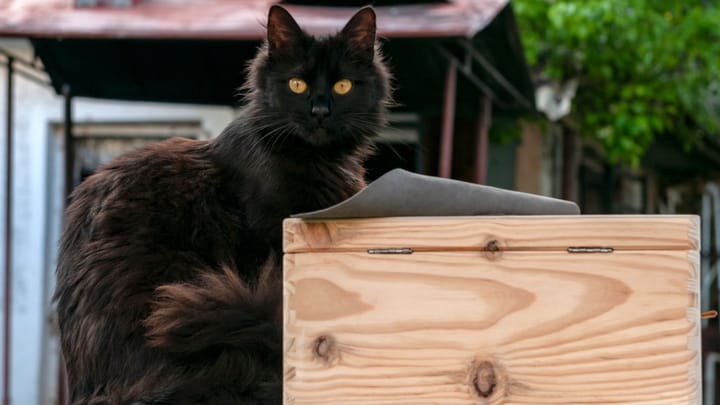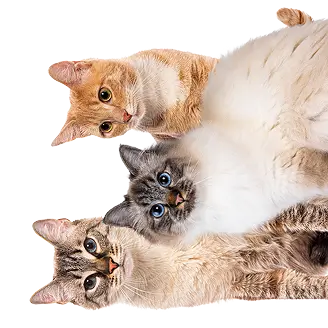York Chocolate

This breed gets its name from the state it hails from, New York, with the ‘chocolate’ part being added on the end, due to its brown colouring. The first York Chocolate kitten came to be as if by accident, born among a litter of moggy cats whose parents were both long-haired, and neither of which had brown or chocolate fur!
|
Life expectancy |
The York Chocolate has a life expectancy of between 15 and 20 years |
|
Temperament |
|
|
Adult size |
Female
Approximately 12 in
Male
Between 12 and 14 in
|
|
Adult weight |
Female
Between 9 and 11 lb
Male
Between 13 and 18 lb
|
|
Coat colour
Chocolate, lilac The only permitted coat colours are lilac and chocolate, with or without some white colouring. |
Brown |
|
Type of coat
Mid-length |
Long |
|
Eye colour
Blue, aquamarine, golden yellow, green, odd / dichroic eyes All colours are accepted. |
Blue
Green
Yellow
Odd-eyed
|
Kittens can sometimes have tabby markings on their coat, which last for about a year and a half before disappearing.
More details about the York Chocolate
York Chocolate: Origins and history
This breed came about in the eighties, when an American woman called Janet Chiefari had a litter of moggy cats, one of which stood out from the others because of its chocolatey colour. When she grew up, the same cat had kittens herself, and some of them also had the same chocolate coat. The pairings that followed then allowed this distinctively coloured breed to develop. Chiefari began attending exhibitions and introduced her cat into the bloodlines of certain Siameses, choosing individuals with slightly rounder heads in order to preserve her own cat’s basic morphology as much as possible. This is how the lilac variety came to be.
The breed wasn’t officially recognised until 1992, and they remain very rare, with only about a hundred York Chocolates in existence.
Physical characteristics of the York Chocolate
York Chocolates are fairly big with a lovely round head, reminiscent of their moggy cat origins. Their well-defined, muscular body oozes elegance, and their coat is a beautiful colour, made up of different lengths of fur.
York Chocolate: Characteristics
York Chocolate: Behaviour
Breed compatibility York Chocolate
York Chocolate: Purchase price
We do not have enough data to set an average price for a York Chocolate. The price varies depending on the lineage of the kitten, their breeding, their age when purchased or even their sex. For your monthly budget, you should allow around £25 per month to cater to their needs in terms of buying litter and quality food.
York Chocolate: Shedding
Average
They don’t lose much fur except maybe during seasonal moulting periods.
York Chocolate: Grooming
Their coats have a reputation for being easy to maintain, despite the density and the fact that there is an undercoat. A weekly brush will be enough.
York Chocolate: Health
Their life expectancy is between 15 and 20 years.
Their dense fur offers them some extent of protection against the cold and the heat, but not so much against extreme temperatures.
They have a tendency to get a little overweight if their feeding isn’t monitored and they don’t get enough exercise. Serve their food in interactive bowls and you’ll kill two birds with one stone: you’ll keep them occupied and their caloric intake will be reduced.
At some point, York Chocolates may develop any of the same conditions as other cats, such as oral diseases. Other diseases they might suffer from include the following:
- Hypertrophic cardiomyopathy, which results in a thickening of the heart muscle. As it worsens, this condition can lead to heart failure, which may result in arrhythmias, lung oedema, arterial thrombosis, and other complications. Screening is performed by echocardiogram, usually on a yearly basis. Treatment can be administered according to the findings of the scan, in order to make the cat more comfortable.
The number of cats per litter is usually around 3. Pairings with other breeds are not permitted.
Do you want a York Chocolate cat ?
2 comments
-
2 comments out of 2
Are you sure you want to delete the comment?

